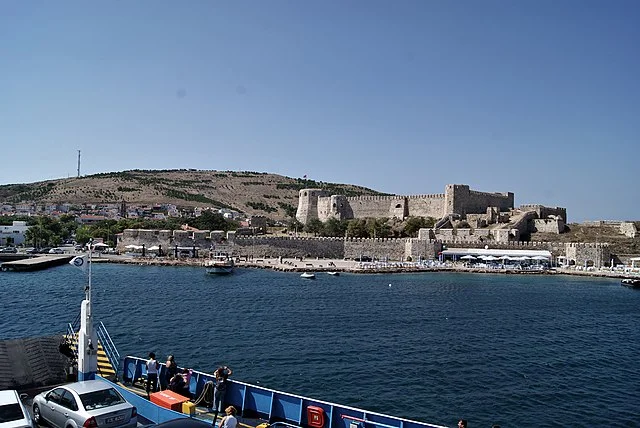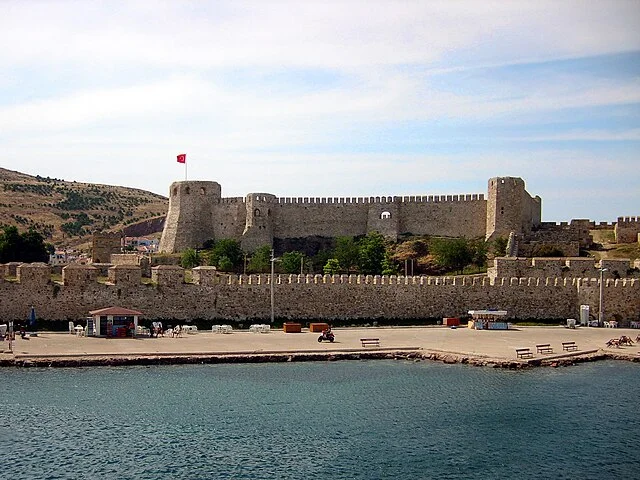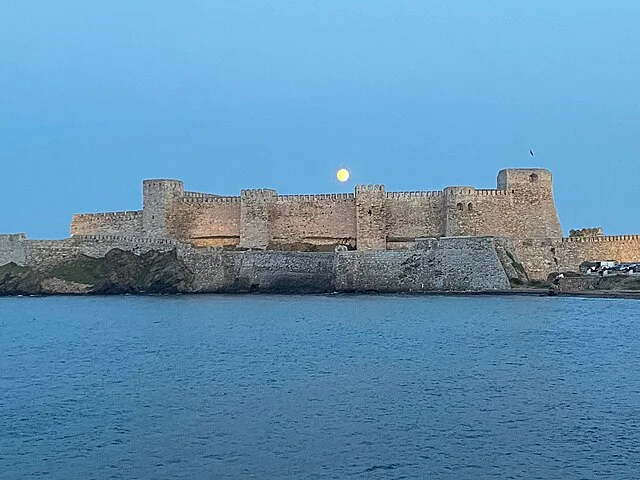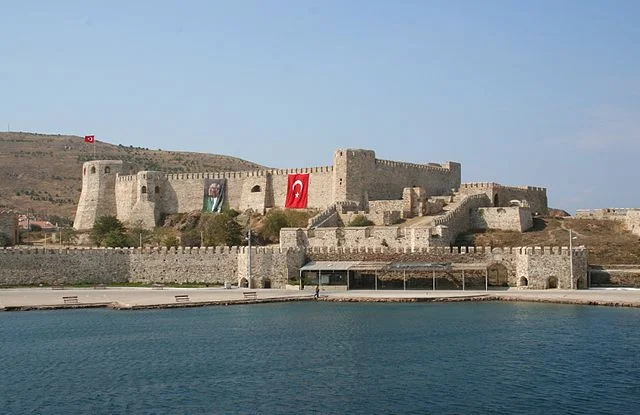Bozcaada Castle, located on Bozcaada Island in the Aegean Sea, holds a prominent place in Turkey’s historical and architectural heritage. This strategic fortress has guarded the island and its surrounding waters since antiquity, serving various empires and witnessing the region’s complex history. Built by multiple rulers and restructured over centuries, Bozcaada Castle is a prime example of adaptive fortification in response to changing military needs and political powers.
Get your dose of History via Email
Early History of Bozcaada Castle

The origins of Bozcaada Castle date back to at least the 5th century BC when Greek settlers and traders inhabited the island, then known as Tenedos. This small but strategically located island sat along key trade routes in the Aegean, which made it a valuable location for commerce and defense. Control of Tenedos meant overseeing vital maritime passages between the Aegean Sea and the Dardanelles, leading to its early fortification.
Ancient Greek records, as well as Roman writings, suggest that early defensive structures on Bozcaada existed to protect against naval threats. The island switched hands between the Greeks and Persians during the Greco-Persian Wars in the 5th century BC. Afterward, it came under the control of Athens and later Sparta, as these city-states competed for dominance in the region. However, no structural remains of these early fortifications have survived, making it difficult to assess their layout or size.
Byzantine and Genoese Influence

With the rise of the Byzantine Empire, Bozcaada became a key defense outpost. During the early Byzantine period, the castle’s strategic value increased, serving as a line of defense against Arab raids in the 7th and 8th centuries AD. Byzantines strengthened and modified the castle structure to support a garrison and withstand siege attacks.
By the 13th century AD, Bozcaada was briefly controlled by the Republic of Genoa, which saw the value in maintaining fortifications on the island to secure its trade interests. Under Genoese rule, the castle was expanded and reinforced to meet the period’s military demands. However, in the late 14th century, control of the island shifted once again, marking the beginning of Ottoman interest in Bozcaada.
Ottoman Reconstruction and Expansion

The Ottoman Empire, recognizing the castle’s strategic importance, took control of Bozcaada in the late 15th century AD. During the reign of Sultan Mehmed II, who had recently conquered Constantinople, the castle underwent significant renovations. The Ottomans expanded the structure, adding bastions, high walls, and additional defensive elements to strengthen the fortress against artillery fire.
In the 17th century AD, Sultan Murad IV ordered further restorations, reinforcing the castle’s walls and adding towers for better visibility and enhanced security. The castle, as it stands today, largely reflects this period of Ottoman architecture, featuring thick stone walls, a moat, and a fortified main entrance. The Ottomans used Bozcaada Castle as a military outpost and administrative center until the late 19th century, when advances in military technology made the castle’s defensive role obsolete.
Structure and Architectural Features

The current layout of Bozcaada Castle is rectangular, covering a large area surrounded by high walls and reinforced towers. A deep moat surrounds the castle, emphasizing its defensive design. The primary entrance is located on the southern side, accessible through a stone bridge that replaced the earlier wooden drawbridge.
Inside, the castle is divided into different sections, with spaces designated for barracks, storage, and administrative buildings. A central courtyard provides access to various areas, including small dungeons and ammunition storage rooms. Visitors to the site today can see the original Ottoman inscriptions above the entrance, reflecting the craftsmanship of the era.
The castle’s thick stone walls are typical of Ottoman-era fortifications, built to withstand cannon fire and artillery. The walls are interspersed with towers, allowing guards to keep watch over the coastline. From these towers, the garrison could spot incoming ships and prepare defenses against potential threats. The design and layout were intentionally planned to ensure that each wall section could be defended independently, a technique employed in other Ottoman fortifications of the period.
Historical Role and Significance

Throughout its history, Bozcaada Castle has played a pivotal role in securing the region. Its position allowed those who controlled it to monitor Aegean trade routes and assert dominance over the surrounding waters. The castle saw action during various conflicts, including local skirmishes, Ottoman-Venetian wars, and other naval engagements between European and Ottoman forces.
During the 19th century AD, as Ottoman power waned and warfare technology evolved, the military significance of Bozcaada Castle declined. By the end of the century, it primarily served as a symbol of Ottoman authority rather than an active defense installation. However, during the early 20th century, the castle was briefly used during World War I as a strategic observation post.
Preservation and Modern-Day Significance

Today, Bozcaada Castle stands as a well-preserved example of Ottoman military architecture. The Turkish government has undertaken several preservation efforts to maintain the site and protect its historical integrity. Restoration projects in recent decades have aimed to prevent structural damage from exposure to the elements and modern environmental conditions.
As one of Bozcaada Island’s main tourist attractions, the castle is open to visitors who wish to explore its historical architecture and learn about its rich past. The island itself has become popular for its natural beauty, vineyards, and cultural heritage, with Bozcaada Castle at its center as a reminder of the region’s strategic and historical significance.
Conclusion
Bozcaada Castle, with its rich history and formidable architecture, remains a significant monument on Turkey’s Bozcaada Island. From its early days as a strategic outpost in the Aegean to its development under Ottoman rule, the castle has adapted to meet the needs of different eras. Today, it stands as a testament to the region’s complex history and architectural heritage, drawing visitors from around the world to experience its story firsthand.
Source:

